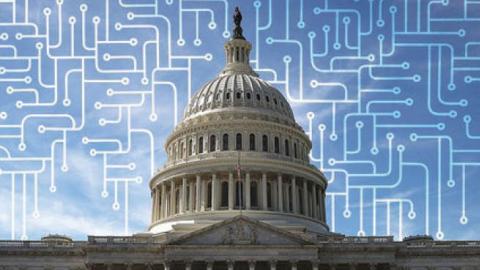The offshoring of American manufacturing that occurred when China entered the World Trade Organization damaged U.S. national security. Now, the coronavirus outbreak and its rapid worldwide spread has thoroughly disrupted global supply chains and provided a stark reminder that industrial capability is a component of any nation’s security.
America is dependent on China’s non-market-based economy for most of our pharmaceutical supply. Masks used by all medical professionals to protect themselves from contagions were blocked from export by China. In addition to these, add the necessary numerous parts and supplies required by the U.S. military that are sourced through China to the list of items vulnerable to supply-chain disruptions.
Yet, the coronavirus-induced disruption offers an opportunity to fix a glaring weakness in our national security while providing a much-needed boost to the economy.
Rather than quantitative easing — which has been the main policy option in recent financial crises — it’s time to dust off fiscal stimulus to help kick-start economic growth in the coronavirus aftermath.
The Defense Production Act (DPA) and DPA Title III program give the Department of Defense (DOD) broad authority to conduct industrial policy in support of national security. These authorities and a portion of the DOD budget could be used to stimulate the reshoring of critical manufacturing capabilities such as pharmaceutical supply, semiconductors and microelectronics.
Throughout its history, the U.S. government has seized railroads, coal mines, even department stores. While today’s challenges do not require such drastic measures, the DPA authorities are broad: “There are three core authorities granted to the president: Title I, priorities and allocations, in which persons and businesses could be required to prioritize national defense when accepting contracts for materials and services; Title III, expansions of productive capacity and supply, production of goods and materials vital to national security (that) can be incentivized (loans, guarantees, privatized industrial facilities); Title VII, general provisions, ability to establish, block agreements both domestic and foreign that threaten national security, and establish a core group of volunteers from industry that can be called upon to serve.”
During the Cold War, President Eisenhower used his understanding of the power of infrastructure to advocate for the National Highway System. While the primary motivation for the infrastructure program was not national security, the emergency evacuation of cities in the event of nuclear attack was cited as a purpose for the project.
To provide a near-term boost to the economy, the executive branch could order federal departments and agencies to fast-track infrastructure projects currently stalled — such as additions to the U.S. electrical grid and the construction of high-speed rail. These projects have hundreds of billions of dollars in private investment waiting. The projects languish in agencies including the Department of Transportation, while bureaucrats hold U.S. economic growth and national security hostage.
Research and development funding — which is at the lowest point since the Cold War — and STEM (science, technology, engineering, math) education grants would be another good investment for DOD dollars. The latest Defense Innovation Unit (DIU) report noted that the Chinese government “is executing a multi-decade plan to transfer technology to increase the size and value-add of its economy, currently the world’s 2nd largest. By 2050, China may be 150 percent the size of the U.S. and decrease U.S. relevance globally.”
Boosting investment dollars for high-tech innovation would help America retain the lead in technology superiority and provide fodder for private-sector economic growth.
Finally, investing in a nationwide, secure 5G network, like that called for in the National Security Strategy, would protect American data and prevent the outflow of an estimated $300 billion to $600 billion of intellectual property lost each year to Chinese theft.
While the 20th century equated national security with bombs, bullets and geography, national security in the 21st century is focused on 1s and 0s — the basis of our digital world — and dollars and cents. Reprioritizing spending away from weapons and towards maintaining U.S. economic, scientific and technological superiority will put us on the Eisenhower path. The investment in the U.S. during the Eisenhower years resulted in economic growth and prosperity.
With economic aftershocks caused by coronavirus, this fiscal policy for national security will reorient the U.S. toward industrial capability and economic growth.
Read in The Hill

















